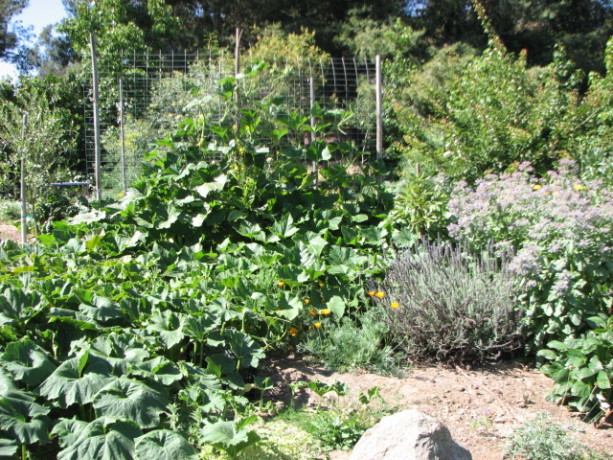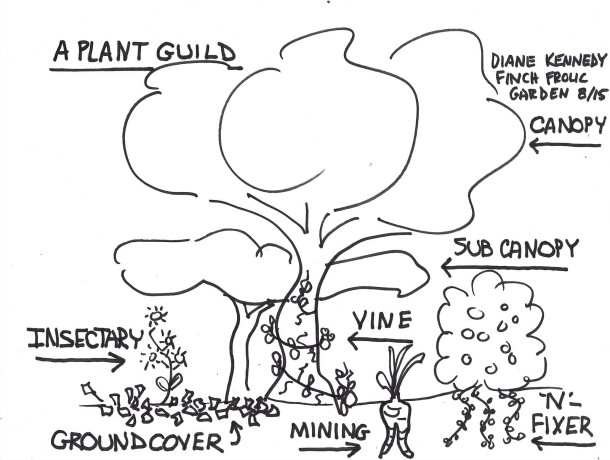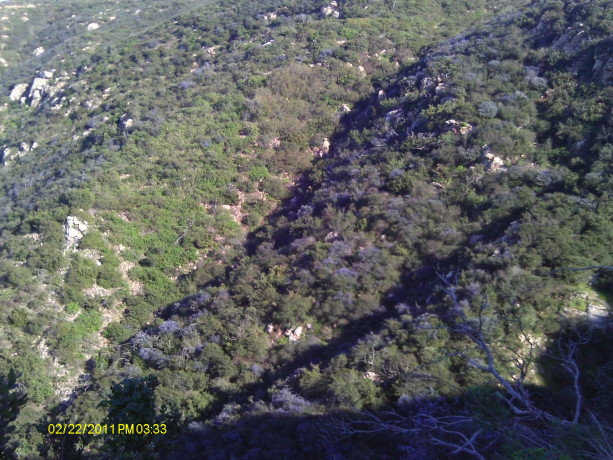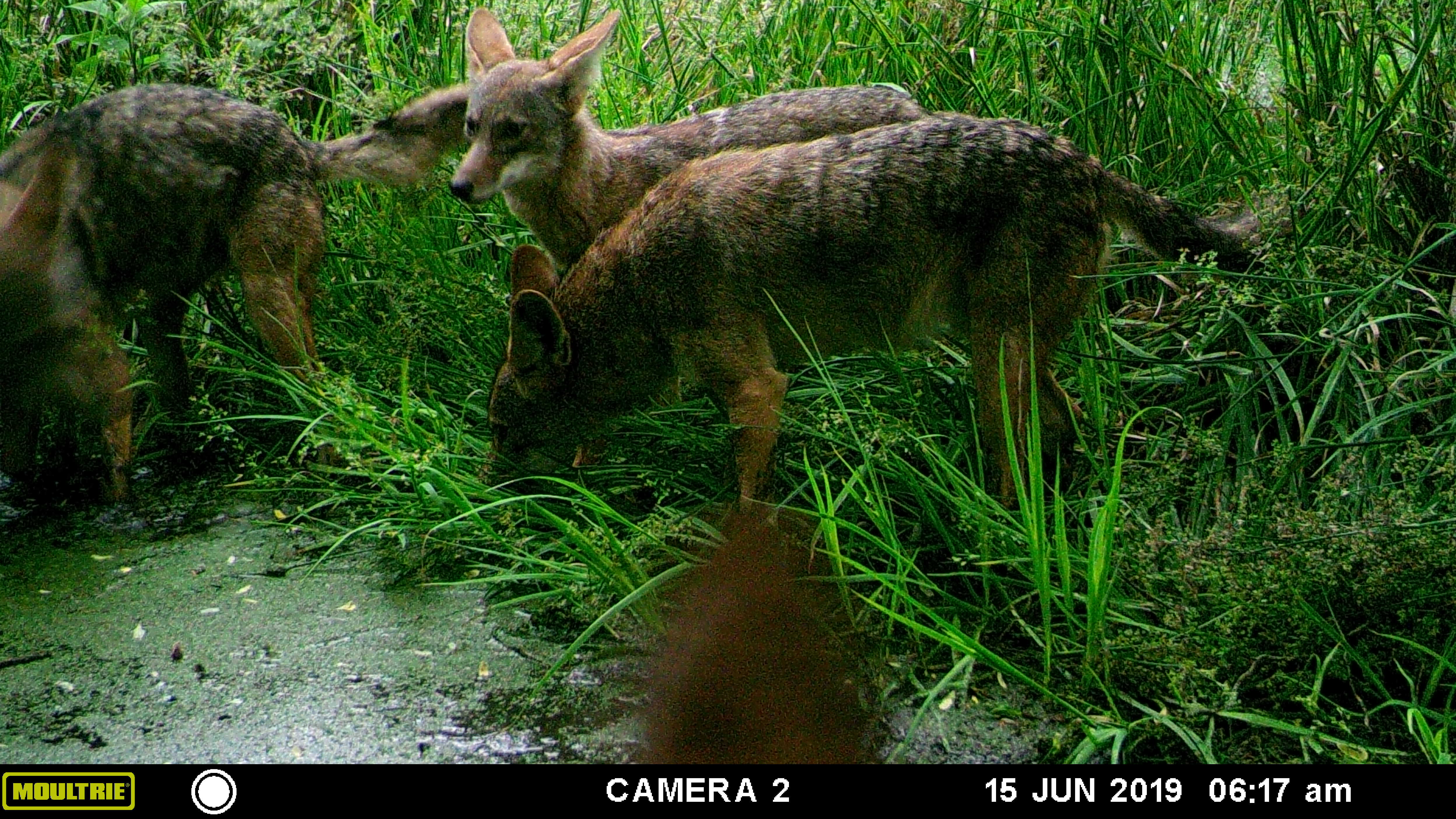Plant Guilds: What are they and how do they work? The first in a series.
 This is an appropriate definition of a guild: an association of people for mutual aid or the pursuit of a common goal. In permaculture a guild is a collection of plants that help each other grow and don’t compete for all the same nutrients.
This is an appropriate definition of a guild: an association of people for mutual aid or the pursuit of a common goal. In permaculture a guild is a collection of plants that help each other grow and don’t compete for all the same nutrients.

Guild design is based upon natural plant communities in healthy living situations. As in a healthy human community, each component has its own purpose and contributes to the health of the whole without diminishing itself. Unfortunately, I know more successful plant guilds than human communities; taking permaculture lessons into the neighborhood and politics is a whole other facet of permaculture that I’m not tackling in this series.
If you scraped an acre of forest down to dirt, removed all the plant materials, then fenced that area off, after a hundred years had passed, through succession, nature would have created the beginnings of an old growth forest. Nature does this by healing the ground with specific plants, one type of plant healing the ground so that the next larger plant can grow. You have weeds, scrub, bushes, low canopy, soft wood upper canopy, and eventually hardwood canopy. Every plant has a purpose, and we’ll discuss those purposes in this series, and how you use them in a guild.
For instance, California poppies grow well in disturbed soil. They are one of the plants nature has used to fix soil dug up by wild animals or shifting land mass. Their roots and the nutrients the dead plants bring to the soil surface help settle and heal the earth for the next succession. Once the soil has settled, poppies don’t grow well in that place anymore, but other plants will. California park officials have to till poppy fields to insure an annual bloom and the visitors -and funding – the fields attract. The forward progression of plant succession in these fields has been stopped.

In the Southern California hills and mountains there are small forests of tall shrubs called California lilac, or ceanothus. Ceanothus is a nitrogen fixer (I’ll go into what that is in another post), so it is building soil as it grows and dies. I met a man who is receiving government funds to ‘reforest’ a portion of local mountains, and he’s bulldozing acres of ceanothus and planting pine trees in their stead. The soil isn’t ready for pine trees, which is the soft wood stage of succession. As we are going into decades long drought, and there is great tree loss due to a pine beetle, his project is doing much more harm than good. In fact, he has such a small success rate that I wonder why he’s still pursuing the project.
When looking at a property, plants can give you clues as to the weather, moisture and soil type. Do you have lots of wild radish and other deep tap-rooted plants? You probably have heavy soil that needs breaking up. Are there lots of low grasses? You probably have sandy soil that needs gluing together. Is there native sumac? Then frost doesn’t linger at that spot. If you learn the growing requirements of native plants and common invasive weeds, you can understand your property by what is successfully growing on it already. Are there any green patches? Either you’ve found the septic leach lines, or an irrigation leak, or a natural water settlement area. Are there clusters of willows, sycamore, elderberry, or Coastal live oaks? There is water close by.
In any mature natural area that hasn’t fallen victim to intentional grazing you’ll find plants of many species growing together. The plant guilds have these components: canopy, sub-canopy, nitrogen-fixer, groundcover, mining plant, vine and insectiary. In the following series I’ll describe in depth each of these components, why they are important and how they work in the guild. When you understand the template then planting in guilds becomes natural, fun, and best of all successful. Stay tuned! You can find the rest of the 9-part Plant Guild series here: Plant Guild #2: Canopy , Plant Guild #3: Sub-Canopy , Plant Guild #4: Nitrogen-Fixers, Plant Guild #5: Mining Plants, Plant Guild #6: Groundcovers, Plant Guild #7: Vines, Plant Guild #8: Insectiaries, Plant Guild #9: The Whole Picture.



One Comment
Bob
I know someone just like that too. Unfortunately, this guy I know only listens to himself. And the fact that he can get money from the government makes him even less likely to listen to reason. Thank you for all you do to educate.